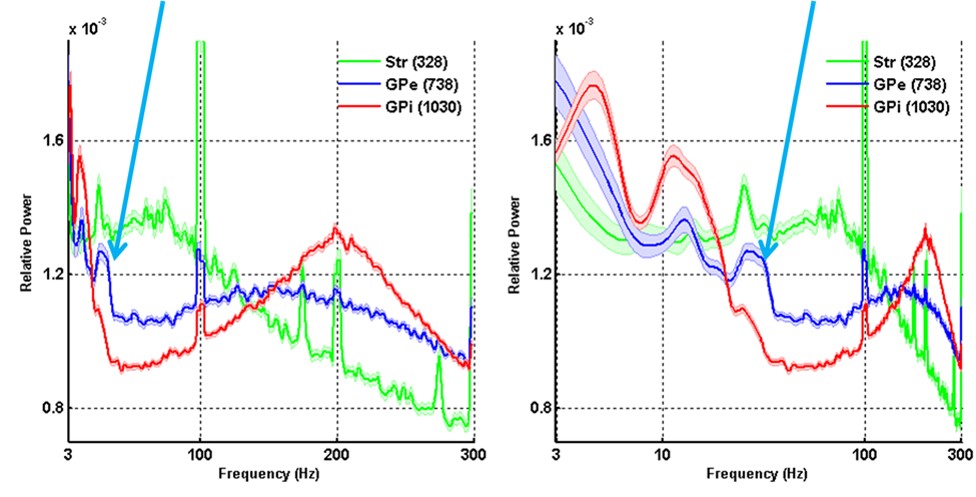Session Information
Date: Monday, June 5, 2017
Session Title: Surgical Therapy: Parkinson’s Disease
Session Time: 1:45pm-3:15pm
Location: Exhibit Hall C
Objective: Development of an algorithm to facilitate automatic detection of and discrimination between the striatum, globus pallidus externa (GPe) nd globus pallidus interna (GPi) during deep brain stimulation (DBS) surgery for Parkinson’s disease (PD)
Background: Accurate electrode location during DBS surgery is crucial for an optimal outcome. Microelectrode recording along preplanned trajectories is often used for verification and accurate definition of the GPi borders during DBS surgery for PD and dystonia. Usually, the demarcation of the GPi borders is performed manually by a neurophysiologist. The exact detection of the borders may be challenging, especially detecting the transition between the GPe and GPi.
Methods: Microrecording (MER) data was collected during DBS surgery for PD. Computational algorithms were designed to conduct multi-feature analysis of single and multi-unit activity in the time and frequency domains including root mean square (RMS) and power spectrum plots.
Results: Visual inspection of the average power spectra revealed significant differences in the 5-300 Hz domain. To identify the frequency band that contained the largest difference between the GPe and the GPi , the 5-300 Hz range of the power spectra was divided into 10 approximately logarithmically spaced bands. For each band, the mean power for each MER was calculated and the difference in the mean power between the striatum, GPe and the GPi was then evaluated. Maximal Str-GPe and GPe-GPi discrimination is observed in two different frequency bands: high frequency (160-225 Hz) and low frequency (25-90 Hz). The method was tested on 2096 MER’s along 26 trajectories that include striatum, GPe and the GPi during DBS surgeries of 7 PD patients. Figure 1
Conclusions: Our preliminary results suggest that robust and accurate discrimination between the MER’s of the striatum, GPe and GPi is feasible. Specifically, we demonstrate that relatively simple features allow for reliable automatic identification of the borders of these deep brain nuclei could be implemented for intraoperative use.
To cite this abstract in AMA style:
D. Valsky, H. Bergman, Z. Israel. Automatic discrimination between the striatum, Globus pallidus externa and Globus pallidus interna during deep brain stimulation surgery [abstract]. Mov Disord. 2017; 32 (suppl 2). https://www.mdsabstracts.org/abstract/automatic-discrimination-between-the-striatum-globus-pallidus-externa-and-globus-pallidus-interna-during-deep-brain-stimulation-surgery/. Accessed April 21, 2025.« Back to 2017 International Congress
MDS Abstracts - https://www.mdsabstracts.org/abstract/automatic-discrimination-between-the-striatum-globus-pallidus-externa-and-globus-pallidus-interna-during-deep-brain-stimulation-surgery/

